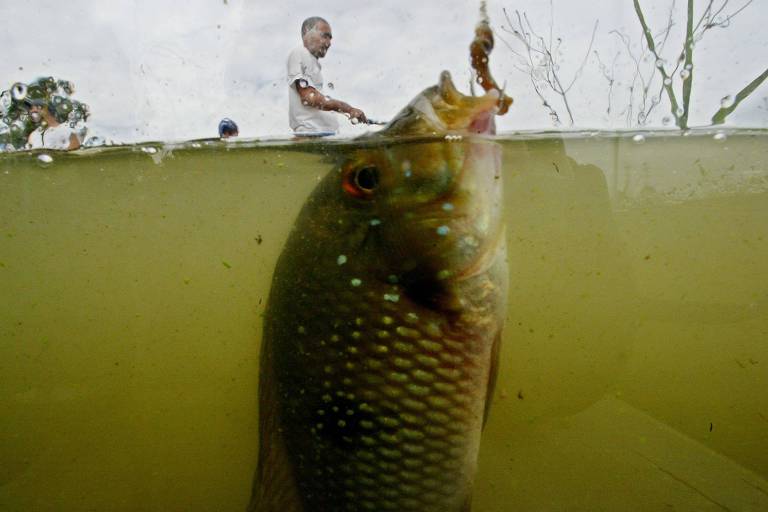Whether it be ceviche, the waters of the touristy Lagoa Azul, or the market, tilapia is an an essential part of the life in Sauce, an Amazonian town at the foot of the Peruvian Andes. And it has for already three decades. However, the introduction of the African fish species has diminished the diversity of the area's aquatic fauna, and now many people oppose exotic fish farming in the Amazon forest. This debate divides states in Brazil.
Tilapia was introduced into the region without a license, and now it is sold for around $R16 a kilo, an accessible price. Other types of fish sold at the market come from far away because they have disappeared from the lake. Tilapia is the only fish offered at a luxurious local hotel, where the local pirarucu fish appears only in a picture frame in the restaurant.
Just like in Peru, where tilapia farming is prohibited in a majority of the Amazon forest, the fish is also the source of controversy on the Brazilian side of the forest. Authorities in the Amazonas and Paré will not allow tilapia farming. However, Tocantins and Mato Grosso will become the first states in the Amazon forest to authorize tilapia farming in tanks inside of the lakes of hydroelectric plants.
Tilapia is a fast-growing fish that is easy to reproduce and is by far the main product of Brazilian fish farming. Last year, it reached 400.2 thousand tons, an increase of 11.9% compared to 2017. The volume represents 55.4% of the farmed fish produced in Brazil - the leading producing state is Paraná.
On the other hand, native fish production fell by 4.8% last year, with 287.9 thousand tons. All five major producers are in the Amazon (RR, MT, MA, PA, and RR). The data is from the 2019 Yearbook of the Brazilian Fisheries Association (Peixe BR).
Translated by Kiratiana Freelon
